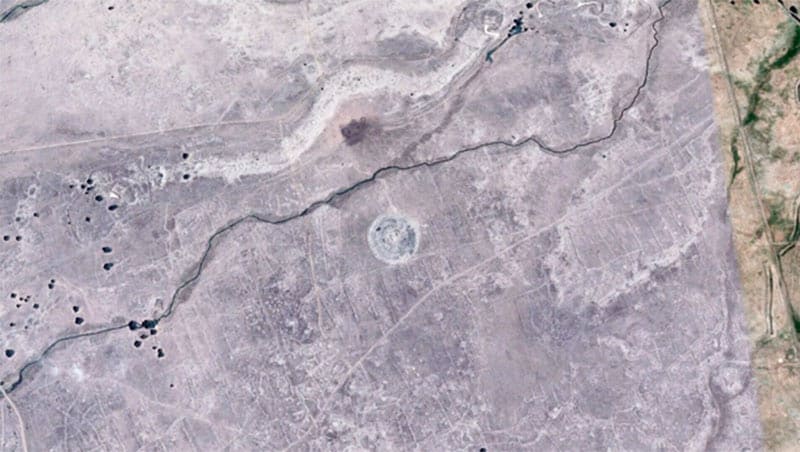Copyright © GenSix Productions 2025, All Rights ReservedSteve Quayle: “Dear friends, I don’t...
MENUMENU
(Scroll down to continue reading)
SQ Private Briefings subscribers: To clear up any confusion, you can continue to renew your SQ Private Briefings subscription annually with the card/payment method you already have on file.
Visit the "My Subscription" area of your account to see the status and renewal date of your subscription.
For more information view this FAQ

by Derek Gilbert
Snakes have always been intensely interesting to humans. Not always in a good way; many of us are instinctively repelled by them, while others are simply terrified. Even so, serpents have been the object of veneration for thousands of years. The pharaohs of Egypt wore a representation of a hooded cobra, the uraeus, on their headdress, a symbol of divine authority and protection. English translations of the Hebrew text behind the Old Testament conceal hints that at least some of the divine entities we call “angels” may have been serpentine in appearance.
Dragons feature prominently in the myths and legends of ancient Mesopotamia, and those stories are reflected in the Bible. As Christians, we believe the Bible preserves the accurate accounts of those tales. Satan is called “the great dragon” and “that ancient serpent” in chapter 12 of Revelation, essentially bookending the supernatural rebellion that began in Genesis.
We should stress that the rebel in Eden was not a talking snake. Nor was that rebel the first adversary confronted by Yahweh. At the very beginning of the Bible, we read:
The earth was without form and void, and darkness was over the face of the deep. And the Spirit of God was hovering over the face of the waters. (Genesis 1:2, ESV)
The word translated “deep” is the Hebrew tehom. That’s a cognate (same word, different language) for the Akkadian temtum, which in turn is a cognate for the Sumerian Tiamat—the name of the Sumerian chaos monster. In the Bible, that character is called Leviathan. Not surprisingly, Tiamat, like Leviathan, is described as serpentine.[1]
During our 2019 tour of Israel, we stumbled onto an unusual landscape feature on the Golan Heights about a quarter-mile north of the mysterious megalithic monument called Gilgal Refaim (“Wheel of the Giants”). Although this site has been excavated by archaeologists, who call it by the name of a nearby village, el-ʿArbain, it’s escaped notice until now. Seen from the air, it’s stunning: A ridge three-quarters of a mile long, two hundred feet wide, and twenty to twenty-five feet high—shaped like a serpent in mid-slither.

Gilgal Refaim, “Wheel of the Giants”
For context, the Great Serpent Mound in Adams County, Ohio is about a quarter of a mile long, twenty to twenty-five feet wide, and only three feet high. But to the best of our knowledge, no one has noticed it or attached any particular significance to the serpent-shaped ridge on the Golan except our friend Doug Van Dorn, a pastor and the author of the 2013 book Giants: Sons of the Gods.[2]
Like us, Doug stumbled onto this discovery accidentally while looking at Gilgal Refaim in Google Earth. And, like us, he immediately realized the connection between the oddly shaped ridge and the ancient kingdom of Bashan, ruled in the days of Moses and Joshua by Og, last of “the remnant of the Rephaim.”[3] In the language of Ugarit, an Amorite kingdom that flourished around the time of the Exodus, Bashan would have been pronounced bathan, which literally meant “place of the serpent.”
Are we making too much of this connection? Scholars describe the ridge as a basalt flow—lava from an ancient volcanic eruption that cooled into a strange shape. If that was the only evidence, it would be easy to write this off as a weird coincidence. However, archaeological digs on the ridge and at nearby Gilgal Refaim, almost a literal stone’s throw away, reveal a number of intriguing facts.
First, more than a hundred megalithic burials have been identified on the ridge, with a scattering of additional burial sites about a quarter-mile east of Gilgal Refaim. None have been found in the immediate vicinity of the wheel itself. Scientific analysis of Gilgal Refaim suggests that it was built around 3700 BC, give or take a couple hundred years.[4] Furthermore, parts of an even older rock wall have been excavated just southwest of the site that was apparently dismantled and the rocks reused to build Gilgal Refaim. And there are a lot of rocks at Gilgal Refaim; it’s estimated that 40,000 tons were moved into the five concentric circles and the central tumulus that make up the site.
For comparison, England’s Stonehenge, constructed about 1,500 years after Gilgal Refaim, is made up of roughly 28,000 tons of stone.
Second, a number of settlements dated between 4000 and 3500 BC have been found on top of the ridge and in a semicircle east of Gilgal Refaim, near the aforementioned tombs. Not one is located within a quarter-mile of Gilgal Refaim. This suggests that Gilgal Refaim was a site of great ritual significance.
Third, Mount Hermon is plainly visible on the northern horizon from Gilgal Refaim. Hermon is the tallest mountain in the Levant at over 9,200 feet, and its connections to the supernatural realm go back at least to the third millennium BC. The serpent-shaped ridge lies directly between the mountain and Gilgal Refaim.
Regardless of whether the ridge is natural or man-made, the abundance of burial cairns along its spine argue that this enormous snake in the “place of the serpent” was a holy site for more than two thousand years before Og ruled Bashan.
So, the questions are these: Why did people on the Golan Heights more than five thousand years ago choose to cluster their burials on that serpent-shaped mound? Did they build Gilgal Refaim there, and the larger circular stone wall that preceded it, because of the mound?
Most intriguingly: Is the Serpent Mound of Bashan the reason Og’s kingdom was called “the place of the serpent”?
Again, this might all be dismissed as coincidence except for the evidence that serpents had an important role in the religion of the prehistoric people of the region. Not just the Golan Heights; ritual objects found along the Jordan valley from Mount Hermon to the Dead Sea, including ophidian (snake-like) figurines, points to the religious power of serpents.
Secular scholars have documented the high concentration of megalithic ritual sites in the region, but they’re not likely to interpret this archaeological evidence the way we do. To us, it’s clear that there is something spiritually significant about the rift scholars call the Dead Sea Transform, a fault line that extends from southeastern Turkey to the Red Sea. This scar on the face of the earth, created by the tectonic stress of the Arabian Plate pulling away from the African Plate, includes the Bekaa Valley between the Lebanon and Anti-Lebanon mountains, the Jordan River valley from Mount Hermon to the Dead Sea, and the Aravah, the desert valley between the Dead Sea and Red Sea. And serpents, or serpentine entities, have played important roles in the events along this rift are connected to the spiritual history of the long war between God and the angels who chose to reject His authority.
To frame it another way, this fault line is a record of the most important supernatural events in history. Within a few miles of either side of the fault, we find mountains sacred to God and His main antagonists, Baal and El; the origin point of the rebellion that created the giant Nephilim of the Old Testament; tens of thousands of megalithic pagan burial sites and funerary monuments, including the mysterious Gilgal Refaim and an even larger stone pyramid below the surface of the Sea of Galilee; the place where Islam was created (that’s right—Mecca was not in Arabia), and where Muhammad believed the final battle between Muslims and Christians would be fought; places known in the ancient world as the entrance to the netherworld and a portal for the Rephaim spirits to cross over into the natural world; and, of course, the sites of the birth, baptism, ministry, death, and resurrection of Jesus Christ.
In other words, the Dead Sea Transform is a boundary that separates the natural world from the unseen realm—a portal. And the serpentine “gods” of the ancient world, and their demonic progeny, have exploited it for thousands of years.
There are many places in the world that are home to manifestations of supernatural activity. However, that’s just the fallout from what’s happened along the Dead Sea Transform since the rebellion in Eden—and even before. In a book planned for publication in 2020, my wife Sharon and I will document the long history of supernatural warfare along this fault line. We will propose a theory that connects the pagan worship of serpent deities (and the dead) along the rift to the supernatural war described in the Bible, and show just how this war ends when God Himself tears the rift open on the great and terrible day that He brings judgment to an unrepentant world.
NOTE: Drone footage of the mound in the video Wars of the Gods Vol. 2: Search for the Rephaim, is available from SkyWatchTV: https://www.skywatchtvstore.com/products/war-of-the-gods-vol-2-search-for-the-rephaim and as a VOD: https://www.vimeo.com/ondemand/searchforrephaim
[1] Isaiah 27:1, Job 41, and Psalm 74:13-14.
[2] Douglas Van Dorn, Giants: Sons of the Gods (Erie, Colo.: Waters of Creation Publishing, 2013).
[3] Deuteronomy 3:11.
[4] Michael Freikman and Naomi Porat
__
Derek Gilbert, host at SkyWatchTV, is the author of the groundbreaking books Bad Moon Rising, The Great Inception, and Last Clash of the Titans. He’s also the co-author with Sharon K. Gilbert of Veneration, a book on the pagan cult of the dead on ancient Israel that reveals hidden prophecies of the return of the evil dead at Armageddon. Derek is a popular speaker at churches and conferences and offers his popular podcast, A View from the Bunker. Derek is a speaker at True Legends The Conference 2020 in Branson, MO, July 10-12th.

Copyright © GenSix Productions 2025, All Rights ReservedSteve Quayle: “Dear friends, I don’t...

Copyright © GenSix Productions 2025, All Rights ReservedStatues of Ramses II as Osiris in Karnak...

Copyright © GenSix Productions 2025, All Rights ReservedSteve Quayle: “If you’ve been wonder...

Copyright © GenSix Productions 2025, All Rights ReservedSteve Quayle: “Friends, just as the cu...

GenSix Productions was launched in 2014 with a mission to set the record straight giving an accurate historical and contemporary worldview based on the pivotal episode recorded in the sixth chapter of Genesis (as well as in many other ancient manuscripts and traditions). We believe that the narrative of Genesis 6 is the key to unlocking the secrets of the prehistoric past, and the cipher for decoding the mysteries of the prophetic future.
DISCOVER TRUE LEGENDS CONFERENCES